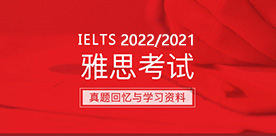2017.10.14雅思考试机经回忆
2017/10/17 10:38:11来源:新航道作者:新航道
摘要:上海新航道雅思培训机构小编为大家带来的是刚过去的2017.10.14的雅思考试回忆,还有答案和解析哦!
上海新航道雅思培训机构小编为大家带来的是刚过去的2017.10.14的雅思考试回忆,还有答案和解析哦!
Listening
|
Section 1 |
|
|
Version |
Topic |
|
V08101 |
参观海洋馆订票 |
|
Questions 1-7 Names of organization: 1. Sandy’s College Address: 2. No.6 Beach Road Contact numbers: 3. 077658143 Numbers of people: 4. 14 (one of members uses 5. wheelchair) Date: 6. 31 October Payment 7. cheque / check
Questions 8-10 Which three attractions do they book? A. Coral Reefs B. Ocean trenches C. Fish nursery D. Rock Pool E. Diving history F. Rare Fish G. Habitat conservation |
|
|
Section 2 |
|
|
Version |
Topic |
|
V11116 |
Campsite Guidance |
|
Questions 11-15 Matching 11. Field: B. finding lost children 12. Stage 2: D. have dance classes 13. Riverside: G. see latest films 14. Green Lounge: F. listen to music band 15. Gateway: E. see a children’s entertainer
Questions 16-20 Mapping 16. Caravan Park: B 17. Field Campsite: A 18. Meadow Campsite: G 19. Cash Point: F 20. Family Tent: E
|
|
|
Section 3 |
|
|
Version |
Topic |
|
V11129 |
Reflective portfolio |
|
Questions 21-26 Multiple Choice 21. What should be included in Mike’s first Reflective Learning Module? A. the aim of this module
22. What can be shown that Mike is an effective communicator? C. listen to others
23. What can be done by Mike to improve his skill as an effective communicator? B. to lead a group discussion
24. What should be done to prove Mike is a critical learner? B. based on a range of sources
25. What does Mike feel after talking with Laura? A. he is looking forward to it
26. What should be mentioned in the learning portfolio? A. self-awareness
Questions 27-30 Matching What reason does Laura give as using the following samples in the reflective journal? 27. essay: B. identify a problem 28.exam: C. gain confidence 29. class note: D. show independent learning 30. presentation note: F. style of learning |
|
|
Section 4 |
|
|
Version |
Topic |
|
V15129 |
入侵植物 |
|
Questions 31-40 ONE word only Invasive species can take over a 31. garden. The phenomenon is mainly caused by 32. humans/ people. Common Broom is originally from 33. Europe has a major impact on 34. timber industry Biological measures to control is to use 35. insects Japanese Berries is originated from 36. Russia yellow 37. tissues grow in 38. pairs called ultimate leaves impact the diet and 39. migration pattern can be used to cure 40. digestive/ digested disease |
|
Reading
|
Passage 2 |
|
|
Topic |
Close to nature, but what is art? |
|
Content Review A Art changes over time and our idea of what art is changing too. For example, objects originally intended for devotional, ritualistic or recreational purposes may be recategorized as art by members of other later civilizations, such as our own, which no longer respond to these purposes.
B What also happens is that techniques and crafts which would have been judged inartistic at the time they were used are reassessed. Life-casting is an interesting example of this. It involved making a plaster mould of a living person or thing. This was complex, technical work, as Benjamin Robert Haydon discovered when he poured 250 litres of plaster over his human model and nearly killed him. At the time, the casts were used for medical research and, consequently, in the nineteenth century life-casting was considered inferior to sculpture in the same way that, more recently, photography was thought to be a lesser art than painting. Both were viewed as unacceptable shortcuts by the 'senior' arts. Their virtues of speed and unwavering realism also implied their limitations; they left little or no room for the imagination.
C For many, life-casting was an insult to the sculptor's creative genius. In an infamous lawsuit of 1834, a moulder whose mask of the dying French emperor Napoleon had been reproduced and sold without his permission was judged to have no rights to the image. In other words, he was specifically held not to be an artist. This judgement reflects the view of established members of the nineteenth-century art world such as Rodin, who commented that life-casting 'happens fast but it doesn't make Art'. Some even feared that 'if too much nature was allowed in, it would lead Art away from its proper course of the Ideal'.
D The painter Gauguin, at the end of the nineteenth century, worried about future developments in photography. If ever the process went into colour, what painter would labour away at a likeness with a brush made from squirrel-tail? But painting has proved robust. Photography has changed it, of course, just as the novel had to reassess narrative after the arrival of the cinema. But the gap between the senior and junior arts was always narrower than the traditionalists implied. Painters have always used technical back-up such as studio assistants to do the boring bits, while apparently lesser crafts involve great skill, thought, preparation and, depending on how we define it, imagination.
E Time changes our view in another way, too. Each new movement implies a reassessment of what has gone before. What is done now alters what was done before. In some cases, this is merely self-serving, with the new art using the old to justify itself. It seems to be saying, ‘Look at how all of that points to this! Aren't-we clever to be the culmination of all that has gone before?' But usually it is a matter of re-alerting the sensibility, reminding us not to take things for granted. Take for example, the cast of the hand of a giant from a circus, made by an anonymous artist around 1889, an item that would now sit happily in any commercial or public gallery. The most significant impact of this piece is on the eye, in the contradiction between unexpected size and verisimilitude. Next, the human element kicks in, you note that the nails are dirt-encrusted, unless this is the caster's decorative addition, and the fingertips extend far beyond them. Then you take in the element of choice, arrangement, art if you like, in the neat, pleated, buttoned sleeve-end that gives the item balance and variation of texture. This is just a moulded hand, yet the part stands utterly for the whole. It reminds us slyly, poignantly, of the full-size original.
F But is it art? And, if so, why? These are old tediously repeated questions to which artists have often responded, 'It is art because I am an artist and therefore what I do is art'. However, what doesn't work for literature works much better for art - works of art do float free of their creators' intentions. Over time the 'reader' does become more powerful. Few of us can look at a medieval altarpiece as its painter intended. We believe too little and aesthetically know too much, so we recreate and find new fields of pleasure in the work. Equally, the lack of artistic intention of Paul Richer and other forgotten craftsmen who brushed oil onto flesh, who moulded, cast and decorated in the nineteenth century is now irrelevant. What counts is the surviving object and our response to it. The tests are simple: does it interest the eye, excite the brain, move the mind to reflection and involve the heart? Further, is an apparent level of skill involved? Much currently fashionable art bothers only the eye and briefly the brain but it fails to engage the mind or the heart. It may, to use the old dichotomy, be beautiful but it is rarely true to any significant depth. One of the constant pleasures of art is its ability to come at us from an unexpected angle and stop us short in wonder.
Questions & Answers Questions 14-18 配对 14. an example of a craftsman's unsuccessful claim to ownership of his work C (Unsuccessful claim to ownership of his work对应原文中的have no rights to the image.) 15. an example of how trends in art can change attitudes to an earlier work E (句子开头for example 明确给出了这个例子,结合上文艺术观点的改变,确定是E段。) 16. the original function of a particular type of art B (人体倒模原用于医学研究,倒模被认为比雕塑低人一等就像摄影曾被认为不如绘画一样。) 17. ways of assessing whether or not an object is art F (如何判断一个物体是否是艺术?原文直接回答了题干这个问题,“The tests are simple”。) 18. how artists deal with the less interesting aspect of their work D (Less interesting对应原文中boring bits和lesser crafts,让助手来做更无趣和没有什么技术性的工作。)
Questions 19-24 判断 19. Nineteenth-century sculptors admired the speed and realism of life-casting. No (十九世纪的雕塑家认为倒模速度快,但并不是艺术。) 20. Rodin believed the quality of the life-casting would improve if a slower process were used. No (Rodin罗丹认为life-casting不是艺术,是对艺术的侮辱。速度的快慢不是倒模和雕塑的本质区别。速度慢是雕塑的必要不充分条件。) 21. The importance of painting has decreased with the development of color photography No (绘画并没有因为摄影的出现而变得不重要,相反很坚挺robust。) 22. Life-casting requires more skill than sculpture does. Not Given (对于各自技术要求的比较并未明确说明。) 23. New arts inspire people to view art in a fresh way. No (新艺术不是鼓励大家去用新的角度看老作品,而是用老作品来证明自己。) 24. The intended meaning of a work of art can get lost over time. Yes (F段,Few of us can look at a medieval altarpiece as its painter intended.)
Questions 25-26 单选 25. The main contrast is between B. size and realism 26. What is important in terms of art D. how people respond to it |
|
|
Passage 3 |
|||
|
Topic |
Case Study: Cargill Dow LLC |
||
|
Content Review During the 1990s, Cargill agricultural company has converted corn to plastic. Dow chemical company had access to market and created a joint venture with Cargill to establish Cargill Dow LLC which produced two types of plastic:
NatureWorksTM PLA is mainly used for packaging. Ingeo is used to make fibre for tissue production.
How It’s Produced Produce carbon dioxide and water as a result of photosynthesis. The corn should go through the process of milling to obtain starch which then becomes unrefined dextrose (a type of sugar). After fermentation, lactitic acid which then goes through condensation to become lactide is obtained. Vacuum distillation and solvent-free melting are final steps. Polymer is finally got.
Competitive Products PLA has been widely used in packaging and fibre production for some advantages. It’s grease-resistant and can provide better flavor and aroma carrier. It can resist ultra-violet so as to reduce the amount of color fading. Sportswear Makers apply PLA in the production of sportswear because it can absorb sweat from the surface of body and when blended with woolen and cotton, it’s more light and comfortable.
More Environmentally-friendly Production PLA production involves large-scale fermentation through chemical processing to obtain value-added chemicals. It consumes 20%-50% less fossil fuels and releases less greenhouse gas compared with conventional plastic. It can absorb carbon dioxide and revert to earth when PLA is degraded. It uses raw material which can be regenerated year after year.
Questions & Answers Questions 27-30 matching 27. Scientists at Cargill agricultural company B 28. Dow chemical company had contacts to C 29. NatureWorksTM PLA is used in F 30. Ingeo is used to E
A. Produce clothes B. Can create plastic from a plant C. Sell plastic made of petroleum D. Produce agricultural products E. Produce fibre F. The manufacture of wrapping material
Questions 31-34 fill in the blanks The Production of PLA
Questions 35-36 multiple choice 35. Number 2 Dent Corn used in PLA production A. Is not suitable for animals B. Is nearly all for PLA production C. Has not undergone genetic modification D. Is specifically developed for PLA production
36. PLA is widely used in packaging when the food A. Is manufactured at high temperature B. Is petroleum-based polymer C. Is sold in big outlets D. Has a strong smell
Questions 37 and 38 Which TWO features of fibre containing PLA are mentioned? A. It can take in moisture of the body B. It can only be produced in dark color C. It prevents athletes from sunburn D. It allows big movements E. It does not readily lose its color in the sun F. It can be used in rainy and stormy weather
Questions 39 and 40 According to the passage, why PLA is environmentally friendly? A. It’s produced at small scale B. It involves natural processing C. It uses clean energy D. It uses renewable raw material E. It does not produce greenhouse gases F. It involves removal of atmospheric carbon dioxide |
|||
Writing
|
Task 1 |
|||||||||||||||||||||||||||||||||||||||||||||||||||||||||
|
Type of questions |
表格 |
||||||||||||||||||||||||||||||||||||||||||||||||||||||||
|
题目 The table gives information about number of people from five states of Europe living in each other’s countries.
|
|||||||||||||||||||||||||||||||||||||||||||||||||||||||||
|
Task 2 |
|
|
Topic |
教育 |
|
Type of questions |
讨论类 |
|
题目 Some people believe the purpose of education is to prepare individuals to be useful to the society, while others say the purpose is to help individual to achieve personal ambitions. Discuss both views and give your opinion. |
|
Speaking
Part 1
|
People & Animal |
|
Family Pop star Neighbours |
|
Events |
|
Indoor Games Birthdays Daily routine History |
|
Objects/Things |
|
Jewellery Vegetables and fruits Boat Bus |
|
Places |
|
Hometown High school |
|
Media |
|
Newspaper and magazine Advertisement Computer |
|
Abstract |
|
Work or study Transportation Politeness Sunshine Names Rainy days |
Part 2&3
|
People & Animal |
|
Describe an interesting person from another country.有趣的外国人 Describe a businessman you admire.敬佩的商人 Describe someone who is a good parent.好家长 |
|
Events |
|
Describe a time you moved to a new home or school.搬家、转学 Describe an enjoyable experience in your childhood.童年趣事 Describe a leisure activity near the ocean.海边活动 Describe a time you need to arrive early.早到的经历 Describe an interesting conversation you had with a stranger.有意思的谈话 Describe an English lesson you had.英语课 Describe a sport game you’ve watch.喜欢看的运动 Describe a (long) car journey you went on.汽车旅行 Describe an occasion when you helped a person.乐于助人 |
|
Objects/Things |
|
Describe a book you want to read again.重读的书 Describe your favourite piece of clothing.喜欢的衣服 Describe a piece of art (like statue, painting).艺术品 Describe an important invention which has changed our life.重要的发明 Describe something you bought according to an advertisement you saw.因广告而购物 Describe something you bought recently that you were happy with.开心购物 Describe a traditional product in your country.传统产品 Describe an important letter you received.重要的信 |
|
Places |
|
Describe a big company or organization you know.大公司 Describe an interesting place that few people know.鲜有人知的地方 Describe a place you know where people go to listen to music (such as a theatre or a music hall).听音乐的地方 Describe a dream home you would like to have.理想之家 |
|
Media |
|
Describe a TV series or drama you enjoy watching.电视节目 Describe a piece of good news you heard from others.好消息 |
|
Abstract |
|
Describe a (good) decision someone made.一个决定 Describe a rule at your school that you agree or disagree.校规 |
|
重点话题Sample Answer |
|
Describe someone who is a good parent. You should say: Who this person is How you know this person What this person does And explain why you think this person is a good parent.
Kobe Bryant is one of the most renowned basketball players in both the US and the world. And when it comes to raising children, he is also someone to admire. His first born, the 14 year old Natalia, has inherited Kobe’s talent and attitude in basketball and will start her training as early as 5 am every day, just like her father, only one hour later. When gift marries grit, success will definitely be reached.
Once Natalia came 4th in a game and refused to receive the trophy. But Kobe told her to embrace the defeat as a reminder that this was the last time she would finish 4th. Kobe never lectures Natalia like most parents do. His history and glory have pretty much got the job done. |
免费获取资料
热报课程
- 雅思课程
| 班级名称 | 班号 | 开课时间 | 人数 | 学费 | 报名 |
|---|
免责声明
1、如转载本网原创文章,情表明出处
2、本网转载媒体稿件旨在传播更多有益信息,并不代表同意该观点,本网不承担稿件侵权行为的连带责任;
3、如本网转载稿、资料分享涉及版权等问题,请作者见稿后速与新航道联系(电话:021-64380066),我们会第一时间删除。
全真模拟测试
制作:每每








